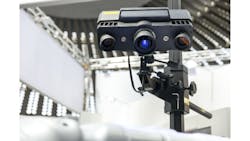Machine Vision Inspection Applications Incorporate Deep Learning
At Vision Systems Design, we have published a lot of content in 2023 about the impact of AI, specifically deep learning, on automating inspection of all types of products. Deep learning algorithms evaluate complicated inspection scenarios based on training with labeled images showing acceptable and unacceptable product variations.
While deep learning is not right for every inspection application, it can help automate tasks that are difficult to achieve with rules-based machine vision methods.
Inspection in the semiconductor industry is one example. From wafer to finished printed circuit board (PCB), manufacturers must add inspection steps at more points in the process. For example, traditional rules-based inspection can struggle to scrutinize printed circuit boards, which come in many variations in shape, tone, texture and contrast. In addition, they present with many types of defects, such as as air bubbles, breakage and abrasion. Deep learning algorithms can be trained on images of defective and non-defective boards, achieving high rates of performance in detecting problems.
Related: How AI-Informed Imaging Can Accurately Detect Subtle Defects in Semiconductors
Deep learning also plays a role in situations in which it is difficult to control product orientation or obtain images with high contrast. For example, Nestlé HealthScience uses deep learning algorithms to help detect the presence of transparent plastic scoops on a reflective gray aluminum surface. A traditional machine vision camera solution did not work because it could not distinguish between the scoop and the aluminum surface, which reflected gray tones onto the scoop.
The scoops are included in cardboard canisters of adult supplemental nutrition powder. On the manufacturing line, a measuring scoop drops from 20 cm above the production line into an empty canister, which is positioned upside down, so that the scoop ends up near the top of the can, just under an aluminum seal, when the production process is complete.
Related: Nestlé Automates Inspection of Plastic Scoops in Adult Nutrition Products
In many inspection scenarios, a hybrid approach incorporating deep learning and rules-based tools provides the most reliable solution, explains David Dechow, founder of Machine Vision Source (Salisbury, NC, USA) and VSD contributing editor.
Experts expect the role of neural networks in automating inspection to continue. As Dechow notes, “While the technology has suffered for some years from extreme marketing hype and inflated expectations, it seems that deep learning is settling into a quieter role, and the trend will be to use it as a valuable tool in the broader capabilities of automated inspection."
That’s why the editors at Vision Systems Design will continue to follow this trend now, next year—and beyond.
About the Author
Linda Wilson
Editor in Chief
Linda Wilson joined the team at Vision Systems Design in 2022. She has more than 25 years of experience in B2B publishing and has written for numerous publications, including Modern Healthcare, InformationWeek, Computerworld, Health Data Management, and many others. Before joining VSD, she was the senior editor at Medical Laboratory Observer, a sister publication to VSD.

